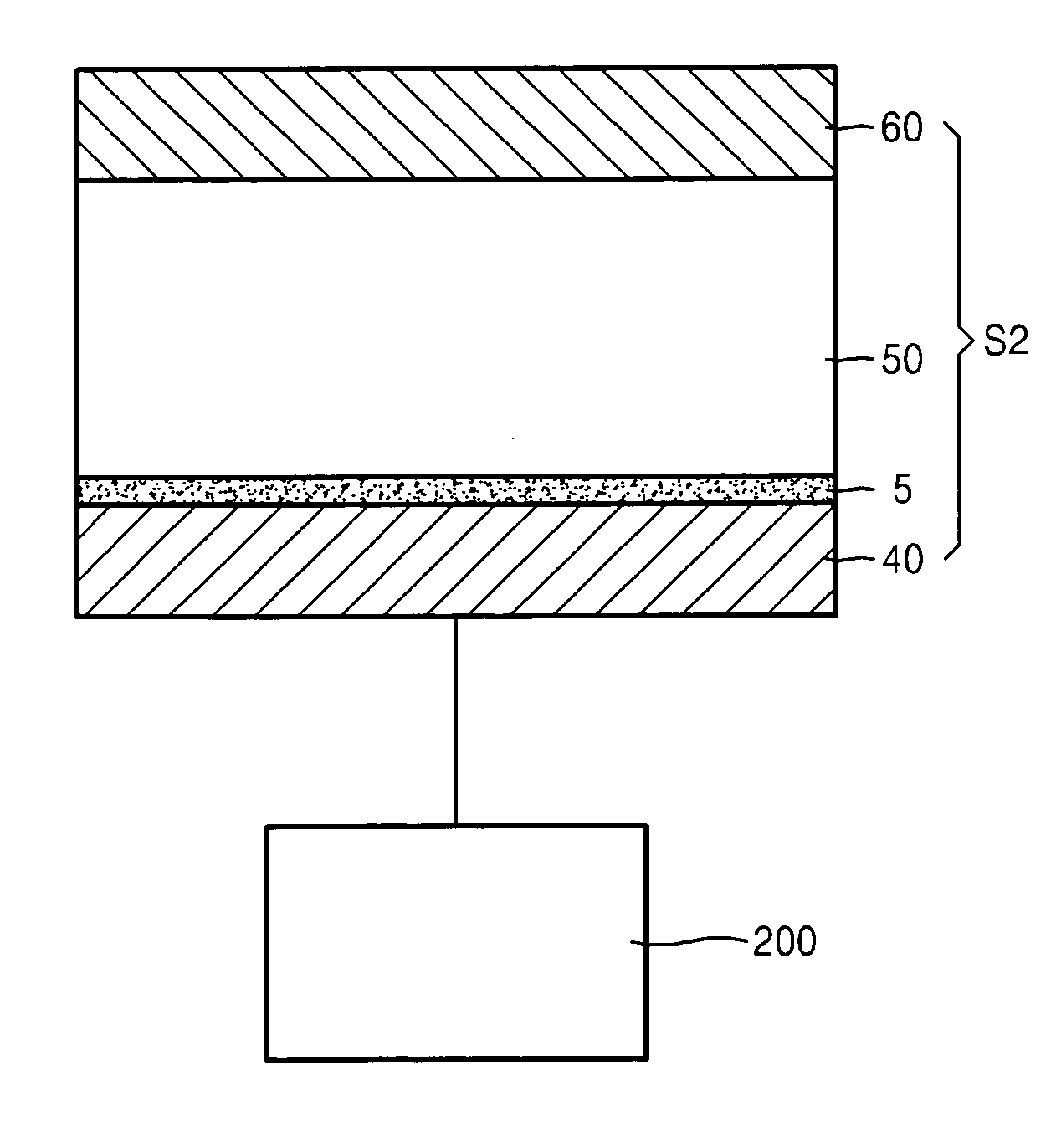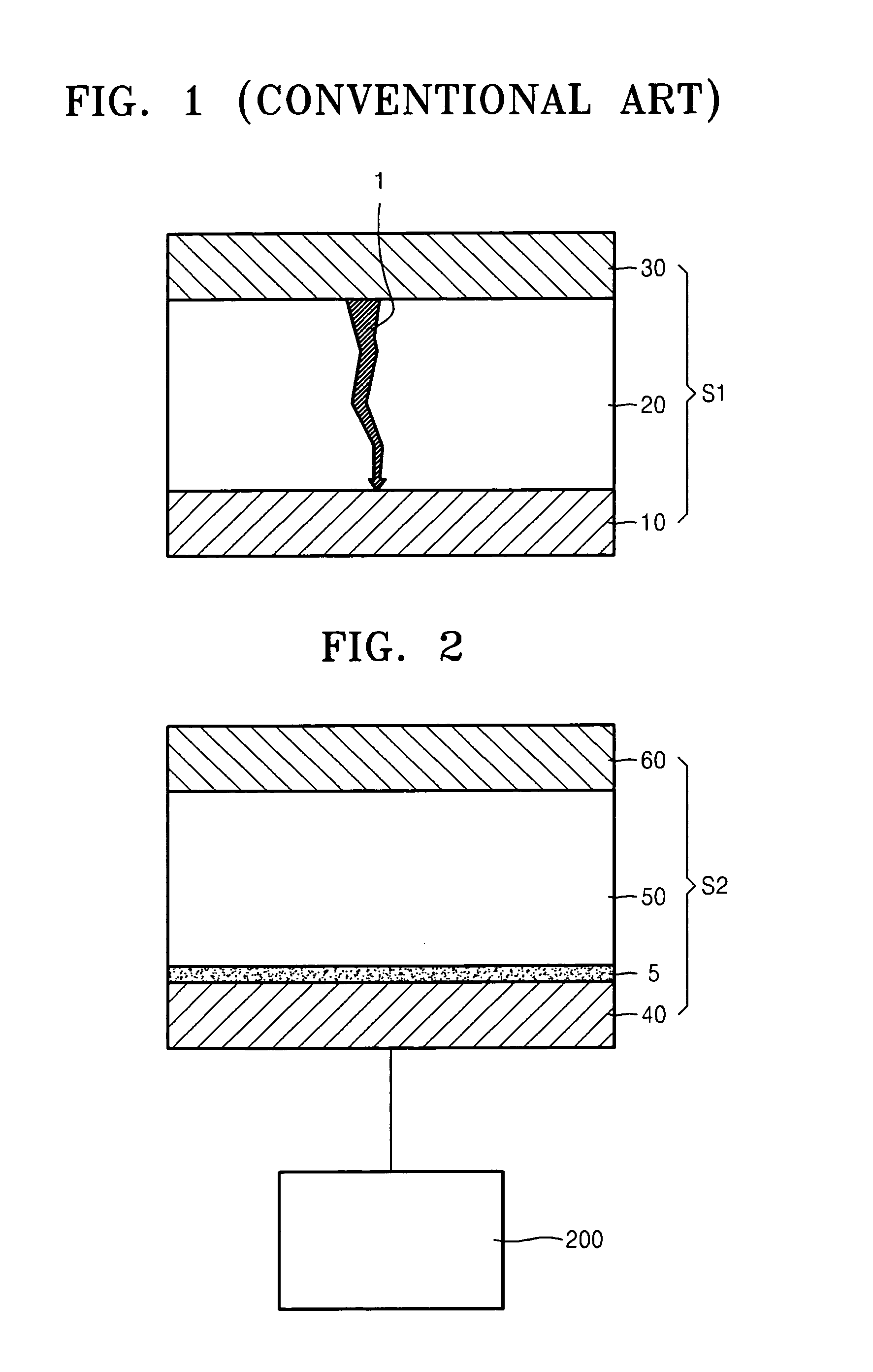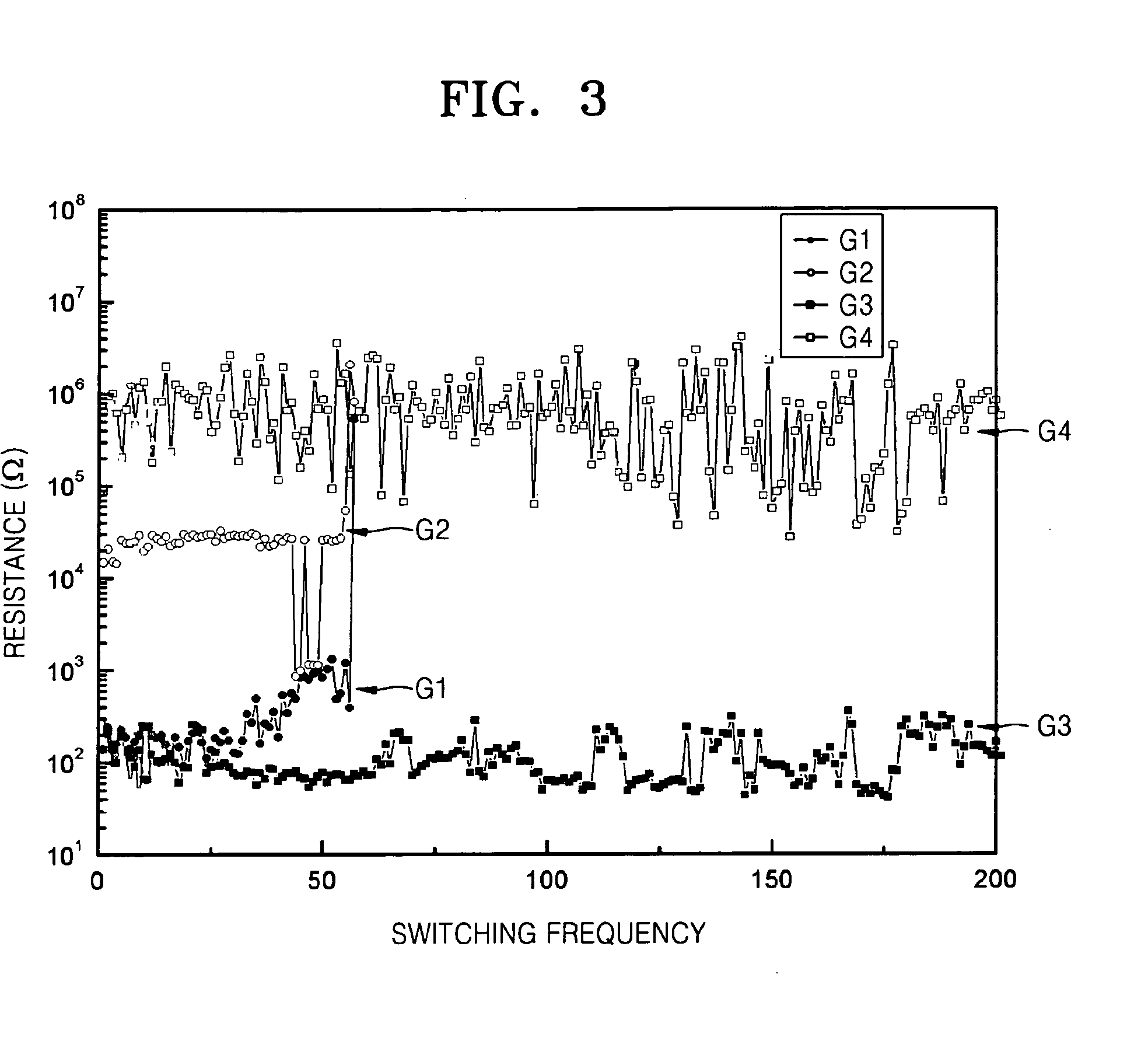Resistive random access memory device
a random access and memory device technology, applied in semiconductor devices, digital storage, instruments, etc., can solve problems such as the loss of stored data when power is turned off, and achieve the effect of high enduran
- Summary
- Abstract
- Description
- Claims
- Application Information
AI Technical Summary
Benefits of technology
Problems solved by technology
Method used
Image
Examples
Embodiment Construction
[0026]The present invention will now be described more fully with reference to the accompanying drawings in which exemplary embodiments of the invention are shown. In the drawings, the thicknesses of layers and regions are exaggerated for clarity, and like reference numerals refer to the like elements.
[0027]FIG. 2 is a cross-sectional view of a RRAM device according to an embodiment of the present invention.
[0028]Referring to FIG. 2, a switching device 200 is connected to a storage node S2. The switching device 200 can be a transistor or a diode. The storage node S2 includes a lower electrode 40, a resistance variable layer 50, and an upper electrode 60 that are sequentially formed. A diffusion blocking layer 5 is formed between the lower electrode 40 and the resistance variable layer 50 or between the resistance variable layer 50 and the upper electrode 60, for example, in the present embodiment, the diffusion blocking layer 5 is formed between the lower electrode 40 and the resist...
PUM
 Login to View More
Login to View More Abstract
Description
Claims
Application Information
 Login to View More
Login to View More - R&D
- Intellectual Property
- Life Sciences
- Materials
- Tech Scout
- Unparalleled Data Quality
- Higher Quality Content
- 60% Fewer Hallucinations
Browse by: Latest US Patents, China's latest patents, Technical Efficacy Thesaurus, Application Domain, Technology Topic, Popular Technical Reports.
© 2025 PatSnap. All rights reserved.Legal|Privacy policy|Modern Slavery Act Transparency Statement|Sitemap|About US| Contact US: help@patsnap.com



